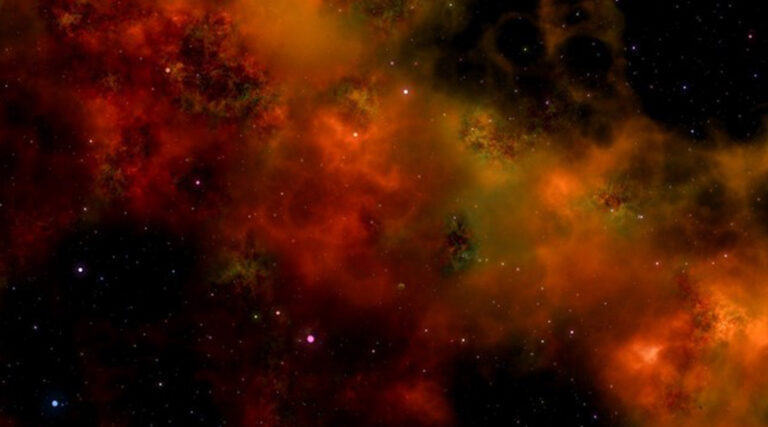Previously unobserved frequency changes in radio signals detected in a black hole binary system could change our understanding of black hole physics.
Over a century ago, Karl Schwarzschild provided an initial solution to field equations in Einstein’s general theory of relativity, laying the initial groundwork for our current understanding of black holes.
Since then, black holes have become some of the most extraordinary astronomical objects known to scientists as their profound effect on the distortion of space and time leads to many incredible properties and phenomena. For example, no object (not even light) can overcome the gravitational pull of a black hole and time near its surface stops running.
The bizarre physics governing black holes also wields a significant influence over celestial bodies in space. For example, when a black hole forms a gravitationally bound system with a star, known as a binary system, then it pulls matter from its companion’s surface, which forms what is called an accretion disk, a rapidly rotating field of matter around the black hole.
Under the influence of the black hole’s gravity and the complex interactions of particles and radiation, matter in the accretion disk forms a dynamic jet that propels matter into space roughly perpendicular to the plane of the disk. Both the disk and the jet emit electromagnetic radiation with enormous power, making the binary system a very bright object and earning the classification of microquasar.
To study one such system known as GRS 1915+105, a team of physicists led by Wei Wang, professor at Wuhan University in China, analyzed data collected by the Five-Hundred-Meter Aperture Spherical Radio Telescope (FAST) and discovered strange features of the microquasar’s radio emission called quasi-periodic oscillations (QPO). They observed that the signal intensity changes with a frequency of about five hertz, which has not yet been found in any binary system to date.
The odd behavior of a microquasar
“The peculiar QPO signal has a rough period of 0.2 seconds,” said Wang in a press release. “Such a signal does not always exist and only shows up under special physical conditions. Our team was lucky enough to catch the signal twice — in January 2021 and June 2022, respectively.”
Similar oscillations in the black hole’s radiation have been observed by scientists before, but in the X-ray region of the electromagnetic spectrum, and never before in the radio range.
“In accreting black hole systems, X-rays usually probe the accretion disk around the black hole while radio emission usually probes the jet launched from the disk and the black hole,” said Bing Zhang at the University of Nevada, Las Vegas, one of the authors of the study published in Nature.
“The detailed mechanism to induce temporal modulation in a relativistic jet is not identified, but one plausible mechanism would be that the jet is underlying precession, which means the jet direction is regularly pointing towards different directions and returns to the original direction once every about 0.2 seconds.”
How will this change our understanding of black holes?
One of the most probable explanations for this occurrence of quasi-periodic oscillations in the X-ray range is associated with fluctuations in the shape of the accretion disk, which change the intensity of radiation visible on Earth. Therefore, the discovery of quasi-periodic oscillations in the radio range may indicate that these two types of oscillations are related to each other.
If so, then further study of these newly discovered oscillations could be very important for understanding the physics of interaction of black holes with matter, since the formation of a black hole jet is a very complex process and its details are still not clear to scientists. The discovery of new phenomena could shed light on this difficult topic.
However, as always in physics, only experiments and observations can give a definitive answer. The team say they still have a lot of work to do before they can claim that these oscillations are related to the dynamics of the disk-jet interaction.
“Other possibilities exist, though, and continued observations of this and other galactic microquasar sources will bring more clues to understand these mysterious QPO signals,” concluded Zhang.
Reference: Pengfu Tian et al., Subsecond periodic radio oscillations in a microquasar, Nature (2023). DOI: 10.1038/s41586-023-06336-6
Feature image credit: WikiImages on Pixabay
This article was updated on August 23, 2023 to correct the statement that black holes were first predicted by Karl Schwarzschild.















+ There are no comments
Add yours